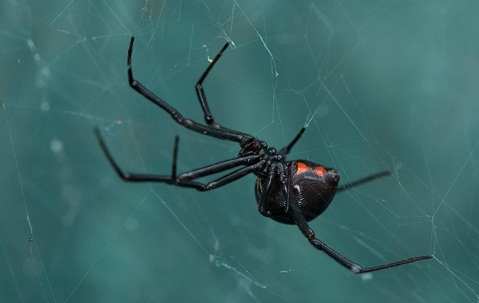Spiders are among the most feared pests, but they are also the most misidentified. Although spiders may all look scary, with many eyes, eight legs, and spooky webs, only a few species are actually dangerous for humans. Here’s a guide to help you identify common spiders in Sacramento.
We’ll talk about the identification of dangerous spiders and what to do if one bites you. We will also discuss how to control an infestation in your Sacramento home. No matter what kind of spiders you’re fighting, Neighborly Pest Management is on your side.
Common House-Invading Spiders
Although there are hundreds of species of spiders, only a few cause problems for Sacramento homeowners
The two types of poisonous spiders you need to worry about are black widows and brown recluse spiders.
In addition to these, you may find jumping spiders, orb-weaver spiders, and wolf spiders. None of these cause significant danger for humans, though you still don’t want them in your home. Furthermore, any spider infestation may be a sign of other pest problems as spiders often follow their prey inside.
Spider Dangers Explained
So, are spiders dangerous? All spiders have fangs and venom. This may sound scary, but don’t worry. Only black widow and brown recluse bites are considered dangerous. While other spiders may bite if they feel threatened, you probably won’t have any reaction to their bite except a brief sting and possibly some itchiness.
Also, spiders aren’t typically aggressive. Though many people have a fear of spiders, these pests do not have it out for you. In fact, they are just as afraid of humans as we are of them. When spiders do bite, it’s almost always because they feel threatened.
If you get too close to a spider or its web, it may bite in self-defense. Often spider bites happen because someone unknowingly sat or laid on one or got their hand too close while reaching into a closet picking up a box. Your best defense against spider bites is extra caution and awareness. Keeping storage spaces clean and tidy will also keep spiders away.
Next Steps After A Spider Bite
If a spider does bite you, it’s important to try to find the spider and identify it. Here’s what you’re looking for to determine whether or not it’s a dangerous spider:
- Black widows are fairly easy to identify. They are black spiders with shiny, hairless bodies. Including the legs, female black widows can grow to be about one and a half inches. The males are much less dangerous; they are often half the size and brown with pink or white markings. Female black widow spiders can be identified most easily by a bright red or orange hourglass shape on their underside.
- Brown recluse spiders are a little harder to identify. They’re one of the most commonly misidentified spiders since other spiders look similar. They are brown or tan. One way to differentiate between brown recluse and other spiders is that brown recluse spiders are solid in color. If a spider has a pattern or stripes or spots, it is not a brown recluse. Another identifying feature of brown recluse spiders is the darker violin shape on their backs.
If you know you've been bitten by a brown recluse or a black widow, you should seek medical care right away. If you aren’t sure but have reason to believe one of these dangerous spiders could be around, it’s still a good idea to seek medical attention.
Even if you think the spider that bit you was not dangerous, it’s important to monitor the area of the bite and seek medical care if you the area swells or you develop a rash, a fever, muscle aches, or difficulty breathing.
Assistance In Spider Control
If you have more questions, need help identifying a spider, or want help getting spiders out of your home, contact Neighborly Pest Management. We have the necessary experience for spider identification and elimination. We’ll get these creepy-crawly pests out of your home in no time.

